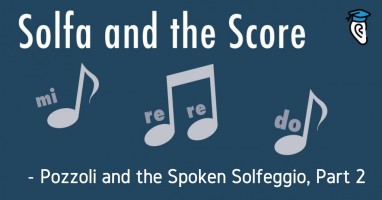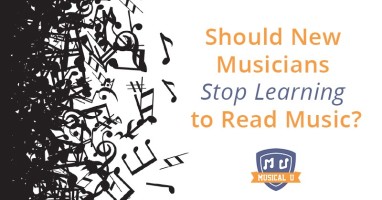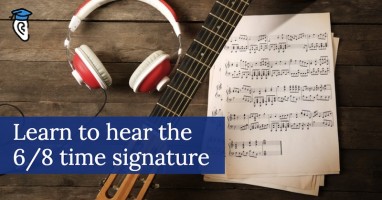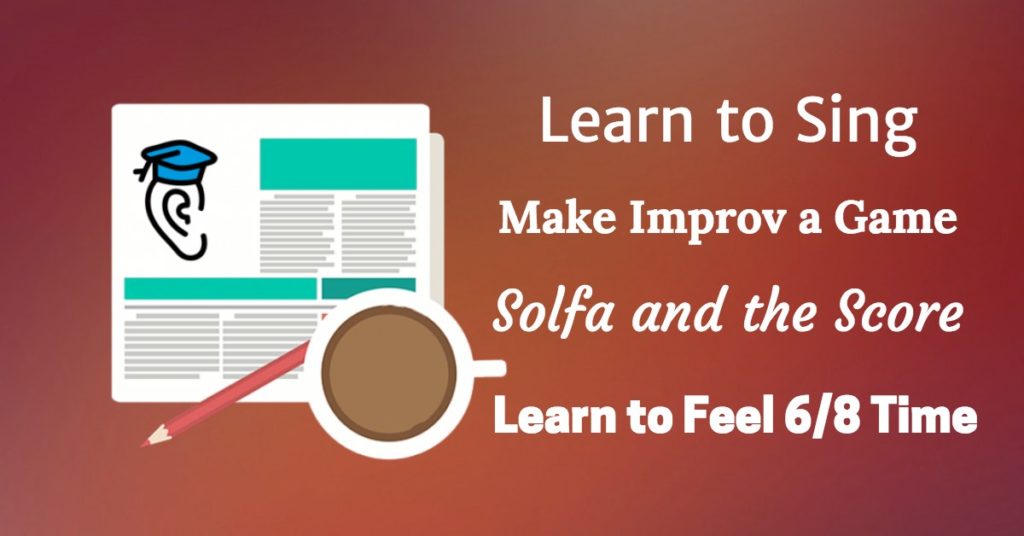This week our focus is singing. There are many misconceptions around who has the talent for singing and who just can’t sing and won’t ever be able to. We are going to address these important issues, so read on to find out how to learn to sing, how special exercises can help you sight-sing from written music and whether singers are even “real” musicians. We also have a great game which helps you improvise, a tutorial on hearing the 6/8 time signature, and a discussion of whether learning to read music is really necessary.
Here at Easy Ear Training we are always trying to spread the word about how much ear training can help you as a musician. In that spirit here’s a guest post I wrote this week for Norman’s Musical Instruments about why you should start training your musical ear the day you buy your first instrument.
Learning to Sing
Our singing voice is the one instrument we’re all born with, but unfortunately most people don’t use it, let alone reaching its full potential. Some people are scared they have a bad voice, others think they are tone deaf, and most lack the confidence to sing in front of others.
Luckily, like everything in music singing in tune is a skill that anyone can learn, and we can help you start this journey! Musical U has several modules to help singers through this process, and this week they published their new roadmap of the four phases that they use to help people who want to learn to sing. The roadmap can be used in conjunction with the Musical U modules or you can you use it as a guide to make your own DIY training plan. Learn more right here.
 If you are already taking active steps to improve your singing but are stuck with how to read music from traditional notation then our Solfa and the Score series may be just what you need. This week the second tutorial was published. Following on from part 1, Pozzoli and the spoken solfeggio – Part 2 includes more exercises to help you internalise the solfa syllables in order to help you sight-sing or transcribe music that you hear.
If you are already taking active steps to improve your singing but are stuck with how to read music from traditional notation then our Solfa and the Score series may be just what you need. This week the second tutorial was published. Following on from part 1, Pozzoli and the spoken solfeggio – Part 2 includes more exercises to help you internalise the solfa syllables in order to help you sight-sing or transcribe music that you hear.
Would you call yourself a singer? If so, would you also call yourself a musician? Find out more about the two groups of singers, and which group can proudly call themselves musicians too in this article I wrote on the Musical U blog: Are singers real musicians?
Should New Musicians Stop Learning to Read Music?
 There are so many different resources now available to learn a new instrument that it calls into question whether there is any need to follow the traditional route of learning to read music from notation. Read more on this topic in this week’s Musical U post Should new musicians stop learning to read music? and then have your say on the Musical U Facebook page:
There are so many different resources now available to learn a new instrument that it calls into question whether there is any need to follow the traditional route of learning to read music from notation. Read more on this topic in this week’s Musical U post Should new musicians stop learning to read music? and then have your say on the Musical U Facebook page:
Can you read music notation? Do you think you need to?
Posted by Musical U on Tuesday, March 1, 2016
Making Improvisation a Game
 Improvisation is a prized skill for many musicians, but it can seem overwhelming and difficult to know where to start. We have been publishing a series of articles on improvisation and in the research process came across a fantastic improvisation game, Tonic.
Improvisation is a prized skill for many musicians, but it can seem overwhelming and difficult to know where to start. We have been publishing a series of articles on improvisation and in the research process came across a fantastic improvisation game, Tonic.
The game comprises a set of cards with improvisation prompts, for example: “Short notes only. Keep everything choppy, using as many pitches as you like”. Along with the prompts you can use the twelve-sided dice which have the twelve chromatic note names to give you randomised notes to use.
Find out more about Tonic in our interview with its creator Scott Hughes and visit our Facebook page for details of our giveaway contest to be in with a chance to win a free copy of the game!
Learn to Feel 6/8 Time
 Six eight is a popular time signature in pop and rock songs. However, if you haven’t studied much music theory it can be confusing and seem unnecessarily complicated. Don’t worry, we can help! In this new tutorial, Learn to hear the 6/8 time signature, we show you how to count 6/8 and explain how it is different from 2/4 and 3/4. This is followed by lots of examples of popular songs that are in 6/8 so that you can learn to hear and feel its characteristics.
Six eight is a popular time signature in pop and rock songs. However, if you haven’t studied much music theory it can be confusing and seem unnecessarily complicated. Don’t worry, we can help! In this new tutorial, Learn to hear the 6/8 time signature, we show you how to count 6/8 and explain how it is different from 2/4 and 3/4. This is followed by lots of examples of popular songs that are in 6/8 so that you can learn to hear and feel its characteristics.
It’s time to take advantage of that free instrument you were born with (your voice) to start improvising some songs using your new knowledge of the 6/8 time signature! I’ll leave you with my favourite song in 6/8 – what’s yours?









